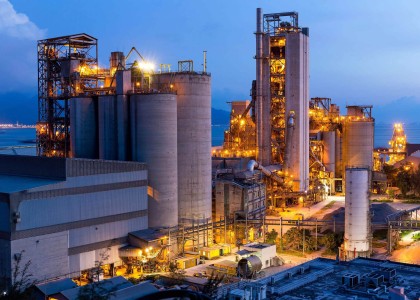As the Biden administration rolls out billions of dollars in new infrastructure investments, it is navigating a congressional requirement to use domestically sourced, lower-carbon construction materials. The General Services Administration (GSA)—which is soon expected to issue purchasing specifications for steel as part of the mandate—now has a critical opportunity to steer the program strategically to maximize its long-term climate impact.
Members of the federal Buy Clean Task Force—including the Environmental Protection Agency, GSA, and the Transportation Department—are helping develop sound “buy clean” criteria for construction materials, including steel. Success is critical because the iron and steel industry accounts for 7% of industrial carbon dioxide emissions in the United States. The “buy clean” rules for steel will need to balance the opportunity of using limited scrap-based steel while supporting domestic primary steel production in a manner geared toward spurring manufacturers to green the industry.
A low-carbon transition is on the horizon in U.S. steel production
The United States already leads the world in clean steel, using scrap for more than two-thirds of production (the highest share of scrap used in any domestic market). This secondary steel is typically better for the climate than primary steel because it is made using an electric arc furnace (EAF) supplied primarily with scrap steel, instead of a carbon-intensive blast furnace-basic oxygen furnace (BF-BOF) system that converts iron ore into iron (a major source of GHG emissions) and then into steel.
But domestic steel has a path to get far cleaner.
Several major reports in the past few years, such as the Department of Energy’s Industrial Decarbonization Roadmap, have identified the most promising paths for decarbonization of the industry. Key strategies include improving energy efficiency and waste heat recovery, shifting to low-carbon electricity, fuel switching, and increasing the share of EAF steelmaking.
The primary steel industry could shift to using EAFs instead of BF-BOF systems by first converting iron ore to direct-reduced iron. Direct-reduced iron (DRI) can be produced using grid electricity and natural gas today, transitioning from gas to bio-methane and green hydrogen as these resources become available. In the shorter term, even using gas, steel made using direct-reduced iron is significantly less carbon-intensive than steel made with a BF-BOF.
It is critical for the government to help drive a transition to production through these methods. It can take a big step in that direction by buying electrically produced steel to spur the market.
What about focusing on scrap-based steel?
While the government could focus entirely on mandating the use of secondary steel, this would present several problems. First, scrap-based steel cannot meet performance requirements for certain uses, such as in defense procurement and in the aerospace and automotive industries.
But most notably, there is simply limited scrap available, and it will all likely be put to use somewhere in the world. Steering more demand for scrap could actually increase the price of this limited commodity while not actually reducing overall steel carbon emissions. And dollars steered toward scrap are dollars not steered toward greening the U.S. primary steel industry, which is strategically important to future domestic manufacturing.
Federal investments are needed to ensure lasting decarbonization
The domestic industry has already made major investments that are reducing emissions from steel production, but it can only expand these investments in the long term if there is sufficient market demand for lower-carbon primary steel.
By encouraging further industry investments and driving down the costs of lower-embodied-carbon steel, government procurement can help accelerate the growth of a decarbonized domestic steel industry geared for the long term.





